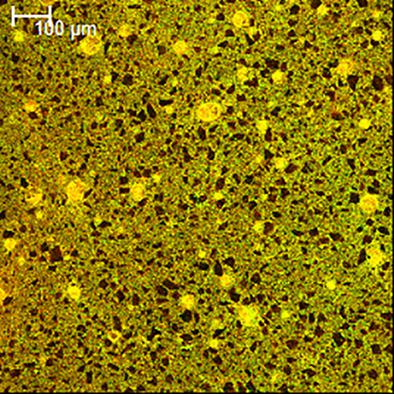当前位置:
X-MOL 学术
›
Microsc. Res. Tech.
›
论文详情
Our official English website, www.x-mol.net, welcomes your feedback! (Note: you will need to create a separate account there.)
Effect of different beverages on surface properties and cariogenic biofilm formation of composite resin materials
Microscopy Research and Technique ( IF 2.5 ) Pub Date : 2021-06-09 , DOI: 10.1002/jemt.23852 Ayşegül Kurt 1 , Esra Özyurt 2 , Nursen Topcuoğlu 3
Microscopy Research and Technique ( IF 2.5 ) Pub Date : 2021-06-09 , DOI: 10.1002/jemt.23852 Ayşegül Kurt 1 , Esra Özyurt 2 , Nursen Topcuoğlu 3
Affiliation

|
The consumption of certain beverages may affect the physical and biological properties of resin composites (RCs) according to type. This in vitro study aimed to evaluate the surface properties and cariogenic biofilm formation in microhybrid and nanohybrid RCs after immersion in different beverages. The effects of four beverages (distilled water–control, tea, coffee, and cola) on two RCs (microhybrid and nanohybrid) were evaluated. Changes in the surface properties were evaluated for each group using surface roughness measurement (n = 10), scanning electron microscopy (SEM) (n = 4) observation, and energy-dispersive X-ray spectroscopy (EDX) (n = 5) analysis. In vitro Streptococcus mutans biofilm formation on the specimens of each group was determined using confocal laser scanning microscopy and SEM analysis (n = 14). The data were analyzed using two-way analysis of variance, with Bonferroni as a post-hoc test and Pearson's correlation (p < .05). Microhybrid RC presented more surface roughness (p = .014) and cariogenic biofilm formation (p = .040). The surface roughness (F = 0.733, p = .536) and cariogenic biofilm formation (F = 1.685, p = .181) values were not affected by the beverages. However, according to qualitative SEM and EDX measurements, these parameters varied depending on the beverage groups. No correlation was found between surface roughness and cariogenic biofilm formation (r = 0.135, p = .287). Microhybrid RCs had a rougher surface and a higher amount of cariogenic biofilm formation than nanohybrid RCs after being subjected to different beverages.
中文翻译:

不同饮料对复合树脂材料表面特性及生龋生物膜形成的影响
根据类型,某些饮料的消费可能会影响树脂复合材料 (RC) 的物理和生物特性。这项体外研究旨在评估浸入不同饮料后微混合和纳米混合 RC 的表面特性和致龋生物膜的形成。评估了四种饮料(蒸馏水对照、茶、咖啡和可乐)对两种 RC(微混合和纳米混合)的影响。使用表面粗糙度测量 ( n = 10)、扫描电子显微镜 (SEM) ( n = 4) 观察和能量色散 X 射线光谱 (EDX) ( n = 5) 分析评估每组表面特性的变化. 体外变异链球菌使用共聚焦激光扫描显微镜和 SEM 分析 ( n = 14)确定每组标本上的生物膜形成。数据使用双向方差分析进行分析,Bonferroni 作为事后检验和 Pearson 相关性 ( p < .05)。微杂交 RC 呈现出更多的表面粗糙度 ( p = .014) 和致龋生物膜形成 ( p = .040)。表面粗糙度 ( F = 0.733, p = .536) 和生龋生物膜形成 ( F = 1.685, p = .181) 值不受饮料影响。然而,根据定性 SEM 和 EDX 测量,这些参数因饮料组而异。在表面粗糙度和生龋生物膜形成之间没有发现相关性 ( r = 0.135, p = .287)。在接受不同的饮料后,与纳米混合 RC 相比,微混合 RC 具有更粗糙的表面和更多的生龋生物膜形成。
更新日期:2021-06-09
中文翻译:

不同饮料对复合树脂材料表面特性及生龋生物膜形成的影响
根据类型,某些饮料的消费可能会影响树脂复合材料 (RC) 的物理和生物特性。这项体外研究旨在评估浸入不同饮料后微混合和纳米混合 RC 的表面特性和致龋生物膜的形成。评估了四种饮料(蒸馏水对照、茶、咖啡和可乐)对两种 RC(微混合和纳米混合)的影响。使用表面粗糙度测量 ( n = 10)、扫描电子显微镜 (SEM) ( n = 4) 观察和能量色散 X 射线光谱 (EDX) ( n = 5) 分析评估每组表面特性的变化. 体外变异链球菌使用共聚焦激光扫描显微镜和 SEM 分析 ( n = 14)确定每组标本上的生物膜形成。数据使用双向方差分析进行分析,Bonferroni 作为事后检验和 Pearson 相关性 ( p < .05)。微杂交 RC 呈现出更多的表面粗糙度 ( p = .014) 和致龋生物膜形成 ( p = .040)。表面粗糙度 ( F = 0.733, p = .536) 和生龋生物膜形成 ( F = 1.685, p = .181) 值不受饮料影响。然而,根据定性 SEM 和 EDX 测量,这些参数因饮料组而异。在表面粗糙度和生龋生物膜形成之间没有发现相关性 ( r = 0.135, p = .287)。在接受不同的饮料后,与纳米混合 RC 相比,微混合 RC 具有更粗糙的表面和更多的生龋生物膜形成。



























 京公网安备 11010802027423号
京公网安备 11010802027423号